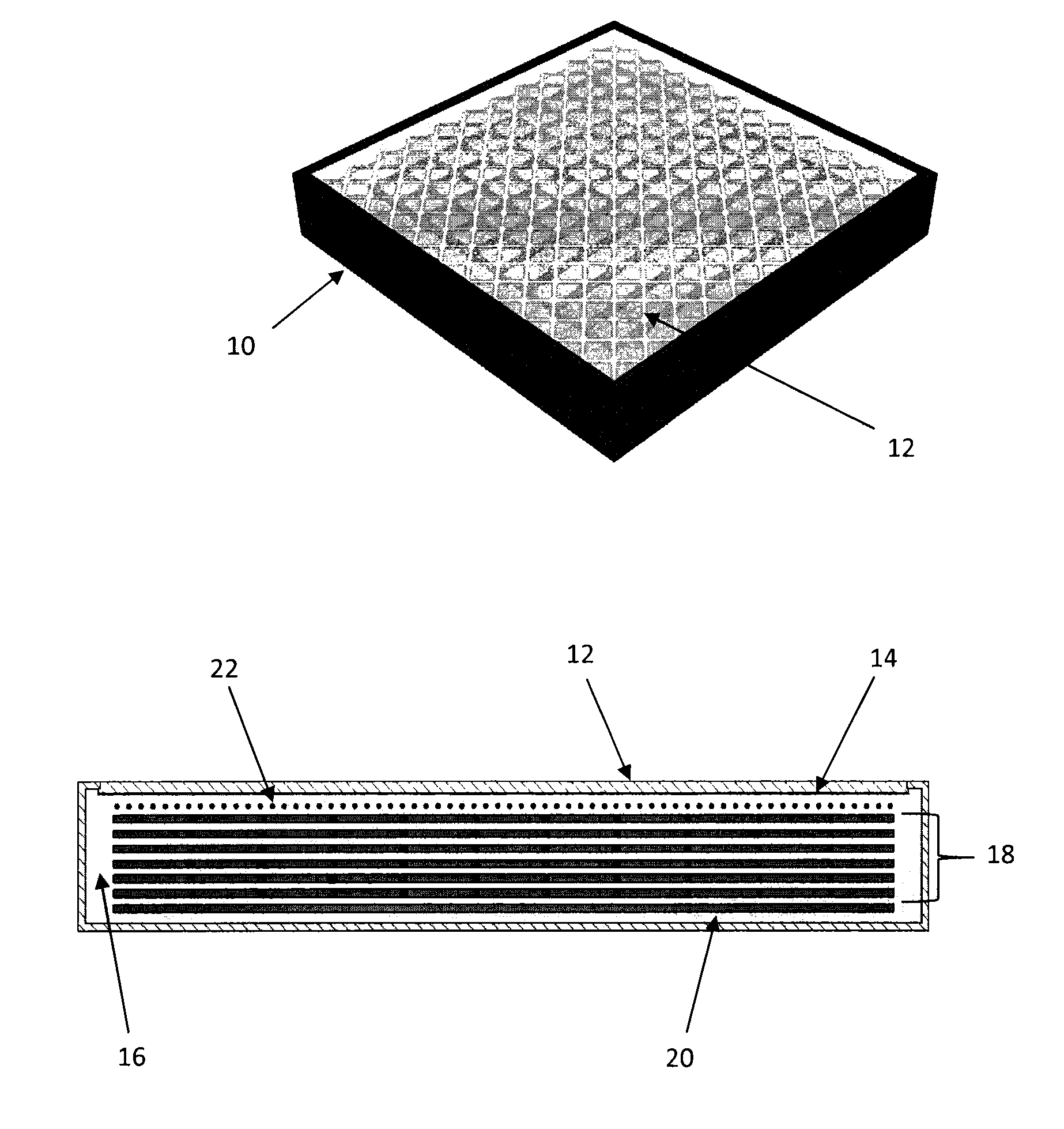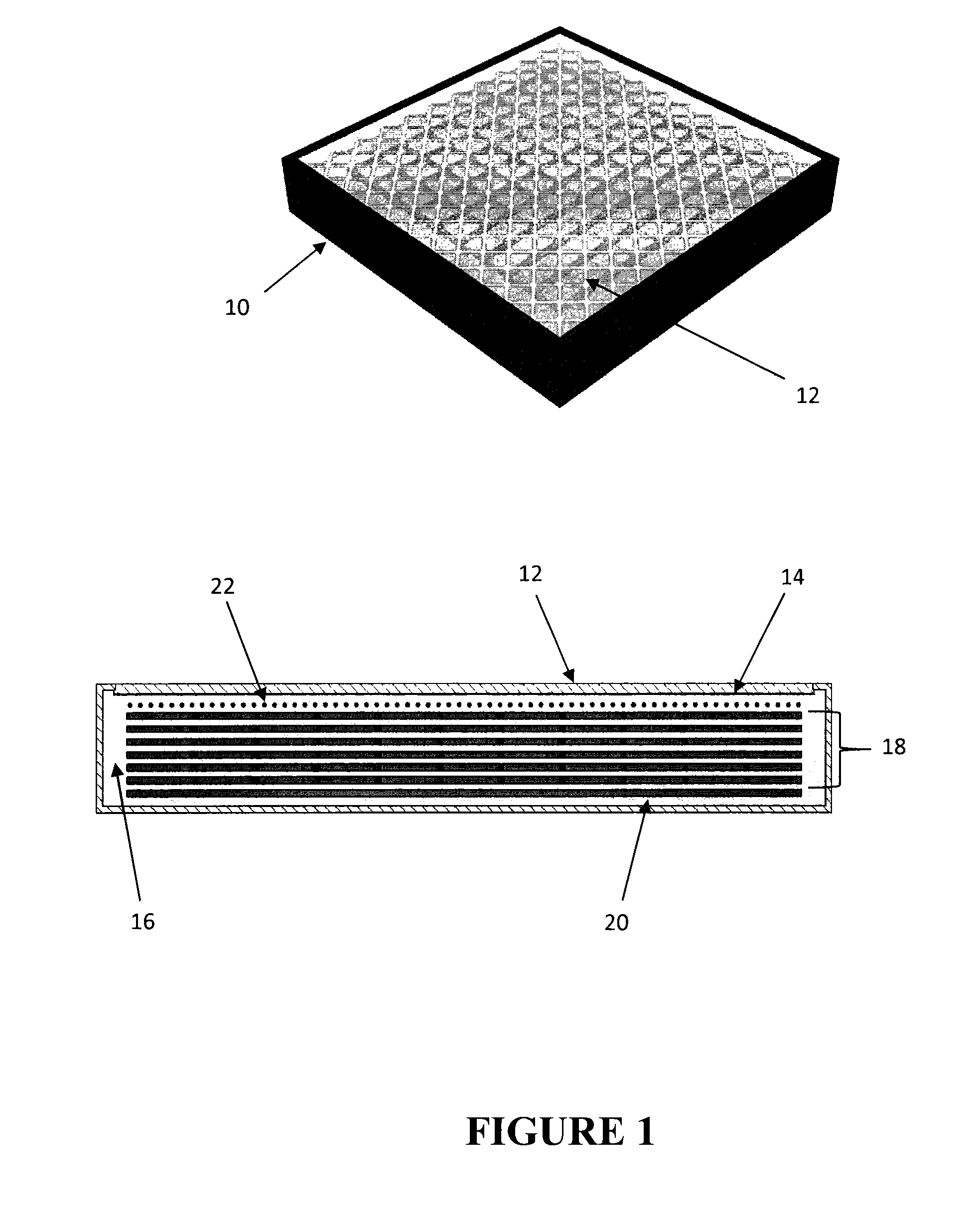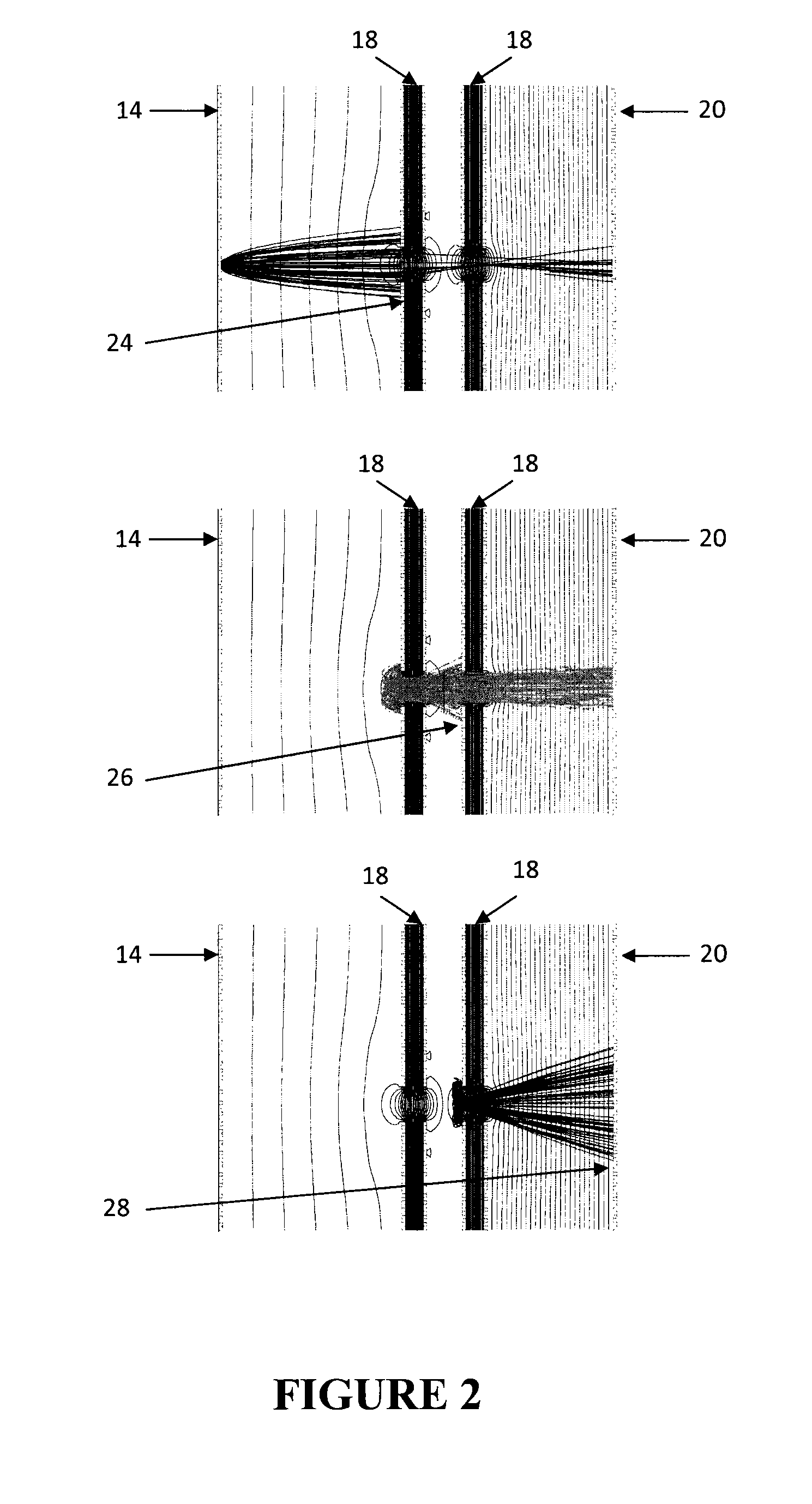Microstructure photomultiplier assembly
a photomultiplier and microstructure technology, applied in the field of microstructure photomultipliers, can solve the problems of increasing the number of electrons, increasing the cost of these devices, and relatively small pmts and mcps, so as to promote the promote the efficient production of secondary electrons, and promote the effect of efficient transfer and acceleration of electrons
- Summary
- Abstract
- Description
- Claims
- Application Information
AI Technical Summary
Benefits of technology
Problems solved by technology
Method used
Image
Examples
Embodiment Construction
[0016]We propose to utilize circuit boards with small channels through them, similar to the basic component used by a GEM. However, we propose to deposit an additional layer of secondary electron emissive material on the conductive layer, among the holes, to form what is termed a multistructured board (MSB). This secondary emissive material can be a suitable alkali-based compound or a more robust compound that can be handled under non-vacuum conditions (e.g. see B. N. Laprade, R. Prunier and R. Farr, Poster paper 1340-17P, The Pittsburgh Conference 2005). This emissive material is only needed on one side of the board (the side facing the photocathode). The MPA is conceived to operate in a vacuum, like a conventional PMT. By applying a voltage across the board and maintaining a voltage between the photocathode and the front face of the MSB, photoelectrons from the photocathode will be drawn towards the board surface and be increased in energy by the electric field inside the channel....
PUM
 Login to view more
Login to view more Abstract
Description
Claims
Application Information
 Login to view more
Login to view more - R&D Engineer
- R&D Manager
- IP Professional
- Industry Leading Data Capabilities
- Powerful AI technology
- Patent DNA Extraction
Browse by: Latest US Patents, China's latest patents, Technical Efficacy Thesaurus, Application Domain, Technology Topic.
© 2024 PatSnap. All rights reserved.Legal|Privacy policy|Modern Slavery Act Transparency Statement|Sitemap



